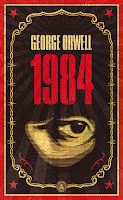I just started to read a friend's current work-in-progress, so the topic of how to give good feedback for a critique partner is on my mind! I've been reading manuscripts for writer friends for years now, so I'm starting to get a handle on what kind of notes are most useful.
In no particular order, here are some tips for giving good feedback to a critique partner.
1. Critique work you like.
This may sound obvious, but it's important. Before you agree to critique for someone, make sure you like their writing. It can be a genre you don't write and a completely different style to yours... but if you don't respect and enjoy the writing, the whole process will be painful, and your notes will be less than useful.
And on the flip side, this is also important if you're exchanging work. How can you take someone's critique notes seriously if you don't respect his or her work? I suggest starting with a small sample first. If you don't feel you would be a good person to critique the whole novel, just say so—and save both of you a lot of time and trouble.
(Luckily, I've critiqued for my current partner before and
love her writing!)
2. Catalogue your reactions.
Some of the most valuable notes you can give your critique partner are your reactions to various parts of the novel. Were you stunned by the big twist? Say so! Appalled by something the hero did to the point where you kind of hate him for the rest of the book? That's important information for the writer to know. They may have intended for you to have that reaction—but they may not have, which would indicate that some revision might be in order.
It's also a good idea to make note of times when you put the book down or had to force yourself to continue. Spots where the story is dragging should be prime targets for revision.
3. Make suggestions, but don't be offended if they're ignored completely.
When I point out a problem, I'll often offer up a suggestion for fixing it. I never worry about whether that advice is taken, though. It's not my story! If my suggestion sparks some other idea for a fix in the mind of the writer, I consider it just as good as if they took it outright.
4. Note typos.
You might get different advice from different people on this one. I've heard some say that at this stage, typos are the last thing to worry about, but I don't agree. I'd be mortified to send work to an agent or publisher with typos, so I'm always grateful when beta readers point them out to me. It doesn't take long to note them as you read for bigger issues, so why not?
Finding good critique partners is one of the best things you can do to take your writing to the next level. Return the favor by giving helpful critiques yourself!
















